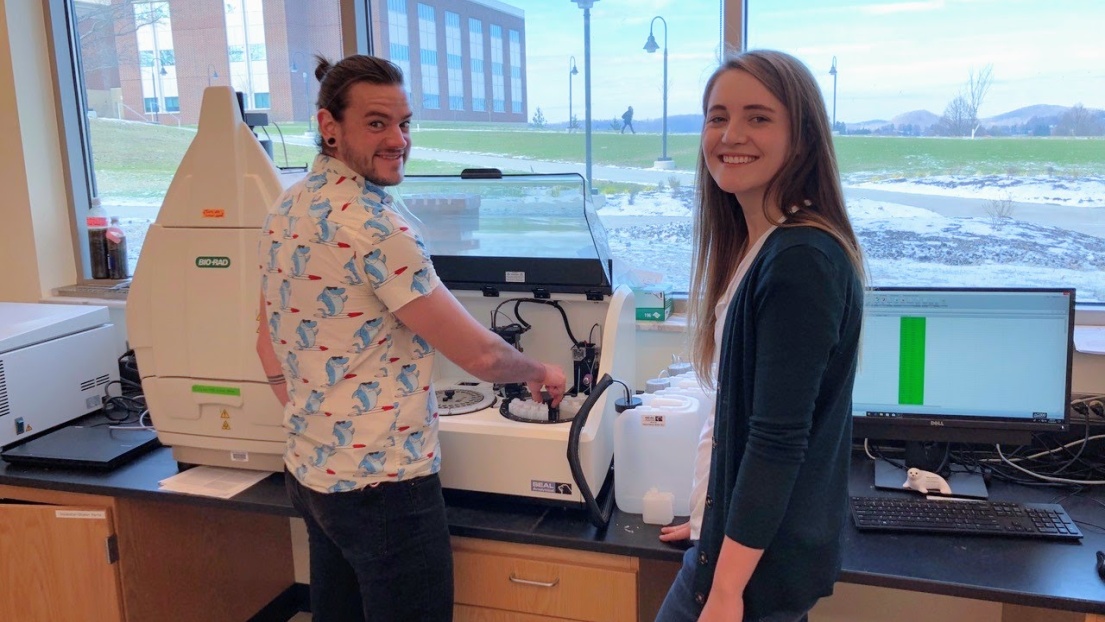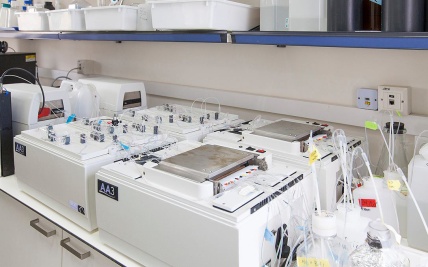Bioenergy Crop and Acid Rain Research Utilizing Discrete Analysis at WVU

Inorganic nutrient analysis is carried out daily on SEAL Analytical’s Automated Analyzers all around the world. While water is perhaps the most commonly monitored matrix for nutrient transportation, soil is an equally important medium for nutrient accumulation.
Vital to all soil ecosystems are the complex microbe communities that thrive within them. Their diverse metabolic capabilities drive recycling of organic material into bioavailable nutrients. As a result, the presence and vigor of these communities invariably shape and impact ecosystem composition and function. Modern soil science investigates much of this world unseen by the naked eye.
The lab of Dr. Zac Freedman at West Virginia University seeks to increase understanding of soil microorganisms by examining how ecological and environmental dynamics shape microbial communities and impact ecosystem function. Dr. Freedman’s research uses a combination of classical microbiological methods as well as state-of-the-art chemical and molecular techniques to investigate the impacts of environmental change on the structure and function of microbial communities in terrestrial ecosystems.
Having conducted his postdoctoral research in another environmental microbiology lab at the University of Michigan - School of Natural Resources and Environment, Dr. Freedman became acquainted with the SEAL Analytical AQ2 Analyzer as well as the AA3 Segmented Flow Analyzer. After joining the faculty at West Virginia University and starting his own laboratory, he selected the SEAL AQ300 as a familiar and reliable workhorse in nutrient analysis.
In one ongoing project from Dr. Freedman’s lab, the goal is to determine whether plant-soil-microbe interactions can be leveraged to improve the yield of the popular bioenergy crop, Switchgrass (Panicum virgatum), on reclaimed mine sites. For this project, the lab utilizes the SEAL AQ300 to assess soil nitrogen, phosphorus and carbon pools to complement microbial activity data and predict how microbial nutrient cycling is impacted by different reclamation strategies across several cultivars of Switchgrass. This is important because in soil, the microbial cycling of nitrogen, phosphorous, and carbon are needed to “unlock” these nutrients from decaying organic matter in order to maximize soil productivity.
In another project, the lab is investigating whether reductions in acid rain are driving the reduced growth of Black Cherry (Prunus serotina) trees, which are of high value in Central Appalachian forests. The lab is using the AQ300 to test the availability of soil nitrogen and sulfur in association with microbiome characterizations. This project will help determine whether changes in air quality across the region, following the passage of the Clean Air Act, are altering the soil’s chemical and biological conditions.

.jpg?resolution=428x267&quality=95)

